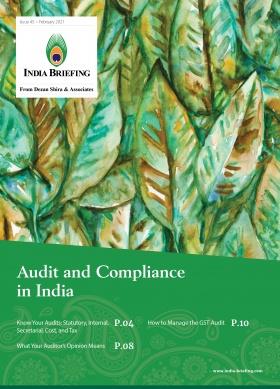India and US Agree to Transitional Approach on Equalization Levy
India and the US have reached an agreement on the imposition of equalization levy or digital services tax till the implementation of OECD Pillar One or March 31, 2024 – whichever is earlier.
On November 24, 2021, India and the United States concluded an agreement to settle differences relating to the two percent equalization levy (digital services tax) imposed by India. Since April 2020, India has imposed a digital services tax on foreign e-commerce companies selling goods and services online to customers in the country and showing annual revenues more than INR 20 million (US$275,404). The agreement is akin to the Unilateral Measures Compromise reached among the UK, Austria, France, Italy, and Spain with the US on October 21, 2021.
Under the agreement, India will continue to impose the levy until March 31, 2024, or till the implementation of Pillar one of the OECD agreements on taxing multinationals and cross-border digital transactions, whichever is earlier. The US will terminate the trade tariff actions it had announced in June 2021 against India and several other countries in response to the levy and will not take any further actions.
Why has India imposed equalization levy?
India’s digital services tax or equalization levy was introduced in April 2020 for foreign e-commerce sellers of goods and services to level the playing field with local businesses who pay taxes in India. As per the latest change to India’s tax law, foreign e-commerce companies will need to segregate inventory of resident and non-resident sellers on their platforms to make clear where the levy will be applicable.
On March 23, 2021, the Indian parliament confirmed changes to the 2021 Finance Bill, including clarity on the digital equalization levy.
US position on the equalization levy
The office of the United States Trade Representative (USTR) has widely opposed the digital tax imposed on online platforms by various countries, as leading firms are of American origin. The USTR stated that such a levy was discriminatory to US commerce and actionable under its law – Section 301, Trade Act of 1974.
Under Section 301, USTR initiated investigations into digital service taxes charged by different countries, including India’s equalization levy, and post the investigations, concluded that the taxes and levies were unreasonable, discriminatory, and restrictive – impacting predominantly US commerce.
Consequently, the USTR announced it would tariffs on certain imports from Austria, France, Italy, Spain, Turkey, United Kingdom, and India. However, the trade body suspended its imposition of the retaliatory tariffs for 180 days to provide additional time to complete the ongoing multilateral negotiations.
On October 8, 2021, India and the US joined 134 other members of the Organisation for Economic Cooperation and Development (OECD) or G20 Inclusive Framework to establish agreement on the ‘Statement on a Two-Pillar Solution to Address the Tax Challenges Arising from the Digitalization of the Economy’.
Part of these global negotiations involved ensuring curbs on the unilateral imposition of digital services taxes by different countries. In keeping with this objective, on October 21, a Unilateral Measures Compromise was reached and a joint statement (October Joint Statement) was issued. The US signed a similar agreement with Turkey on November 22, 2021.
Details of the India-US agreement on equalization levy
India’s Ministry of Finance recently released a statement declaring that the terms of the October Joint Statement will also apply to India’s two percent equalization levy applicable on e-commerce supply or services and USTR’s trade action against equalization levy. According to the statement, the final terms of the agreement will be finalized by February 1, 2022.
- Withdrawal of equalization levy: India will not be required to withdraw its two percent equalization levy applicable on e-commerce supply or services until OECD Pillar One provisions come into effect in the country – expected to be in 2023.
- Credit of excess equalization levy paid: Excess equalization levy paid by multinational enterprises subject to Pillar One will be available as credit for set off against their corporate tax liability determined under Pillar One. The credit will be given for equalization levy paid by multinational enterprises subject to Pillar One from April 1, 2022 till implementation of Pillar One or March 31, 2024, whichever is earlier.
- Year in which credit available: The credit of excess equalization levy paid will be applied in the first taxable year in which a taxpayer is subject to the tax liability after the interim period. In case Pillar One is not applicable on the taxpayer in the first year of implementation, the credit will be determined on the basis of the first year in which Pillar one applies to such taxpayer and shall become available at such time. However, the credit will not be available for taxpayers that first become subject to Pillar One more than four years after Pillar One comes into effect in India.
- Carry forward of credit: The credit which is determined can be carried forward for set off against Pillar One corporate tax liability until exhausted.
- USTR Action: The US will terminate USTR’s action against India regarding imposition of trade tariffs in retaliation to the two percent equalization levy until the end of the interim / transitional period.
Background: OECD/G20 Inclusive Framework on BEPS
The OECD/G20 Inclusive Framework Tax Deal contains two main elements – Pillar One, which calls for the redistribution of profits generated by the largest companies to the domicile markets where they actually make their sales instead of simply where they are headquartered and Pillar Two, which establishes a global minimum effective tax rate of 15 percent determined on a country-by-country basis.
Pillar One
This has three components – new taxing rights for market jurisdictions, that is where customers are located, to access a share of the residual profit of a multinational enterprise (MNE); the calculation of a fixed return for certain baseline and marketing and distribution activities in jurisdictions where the MNE holds a physical presence; and establishing dispute prevention and resolution mechanisms to achieve ‘tax certainty’. The scope of Pillar One will apply to the largest and most profitable multinationals, and not just digital businesses. Its scope will not cover extractive industries and regulated financial services.
Pillar Two

About Us
India Briefing is produced by Dezan Shira & Associates. The firm assists foreign investors throughout Asia from offices across the world, including in Delhi and Mumbai. Readers may write to india@dezshira.com for more support on doing business in in India.
We also maintain offices or have alliance partners assisting foreign investors in Indonesia, Singapore, Vietnam, Philippines, Malaysia, Thailand, Italy, Germany, and the United States, in addition to practices in Bangladesh and Russia.
- Previous Article Selling Merchandise Online in India: Market Entry Strategy, Tax Liability, Regulations
- Next Article India Incentivizes Production of White Goods, Solar Modules: New PLI Schemes








